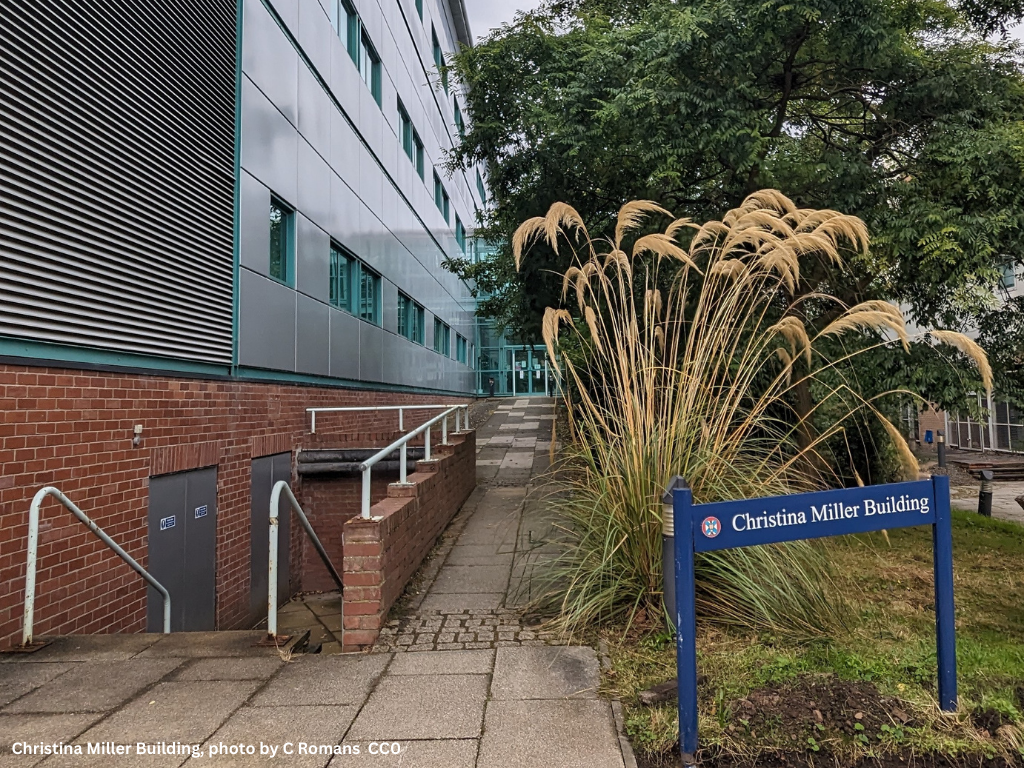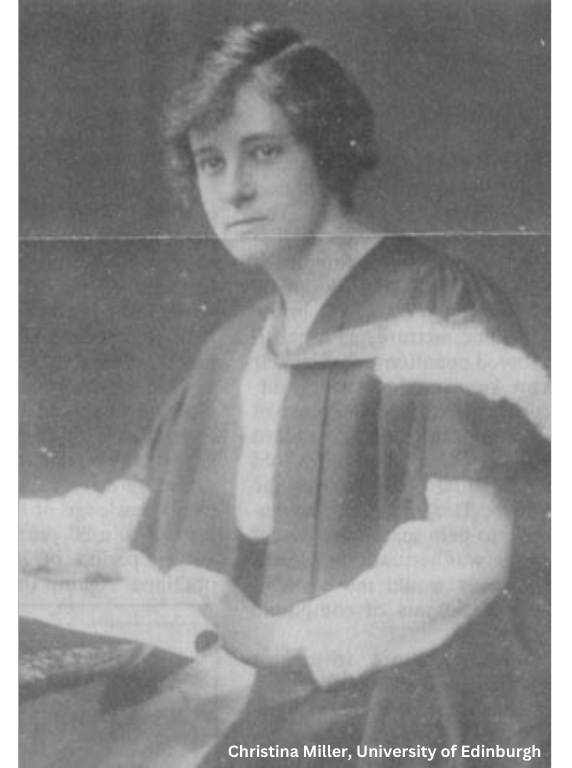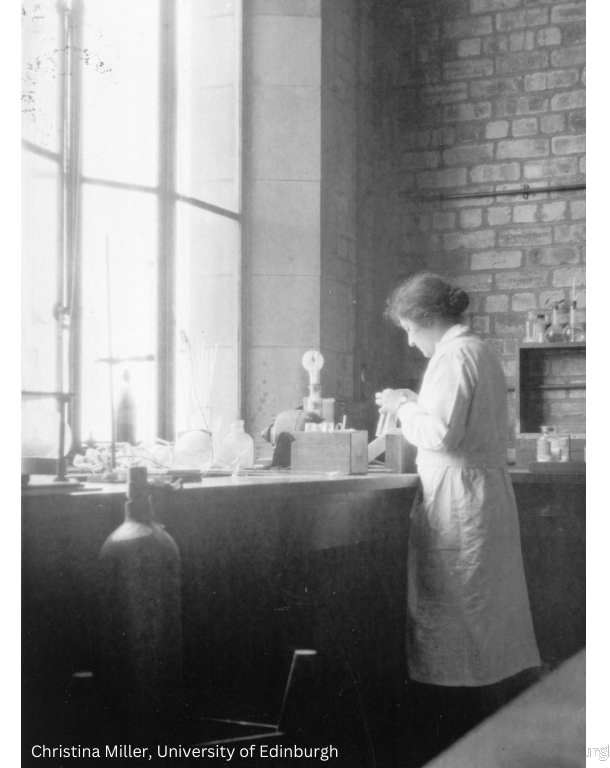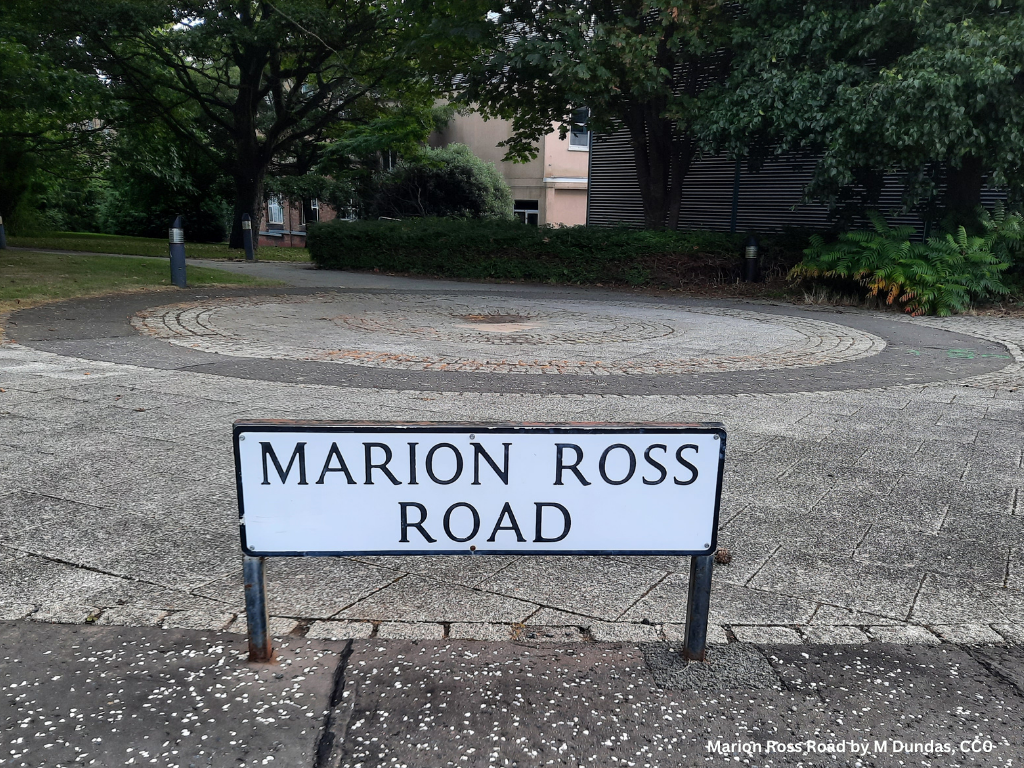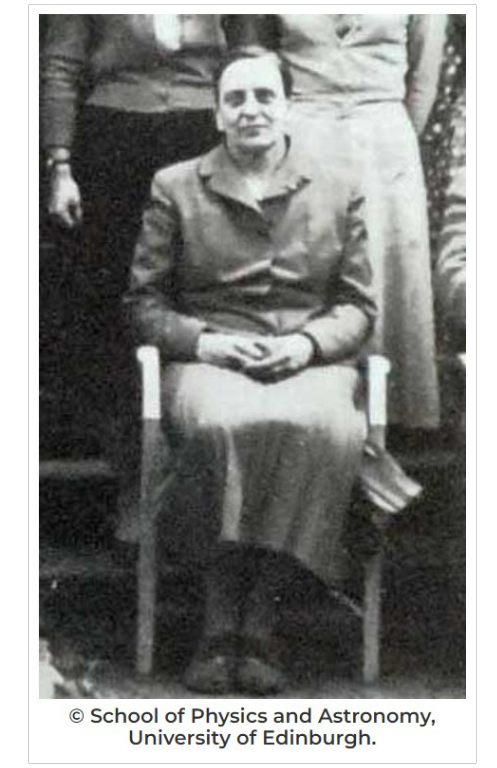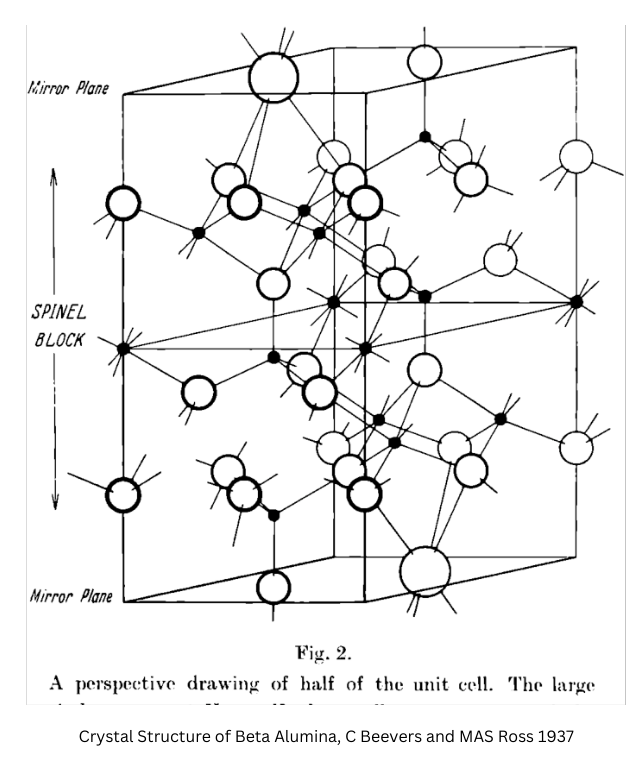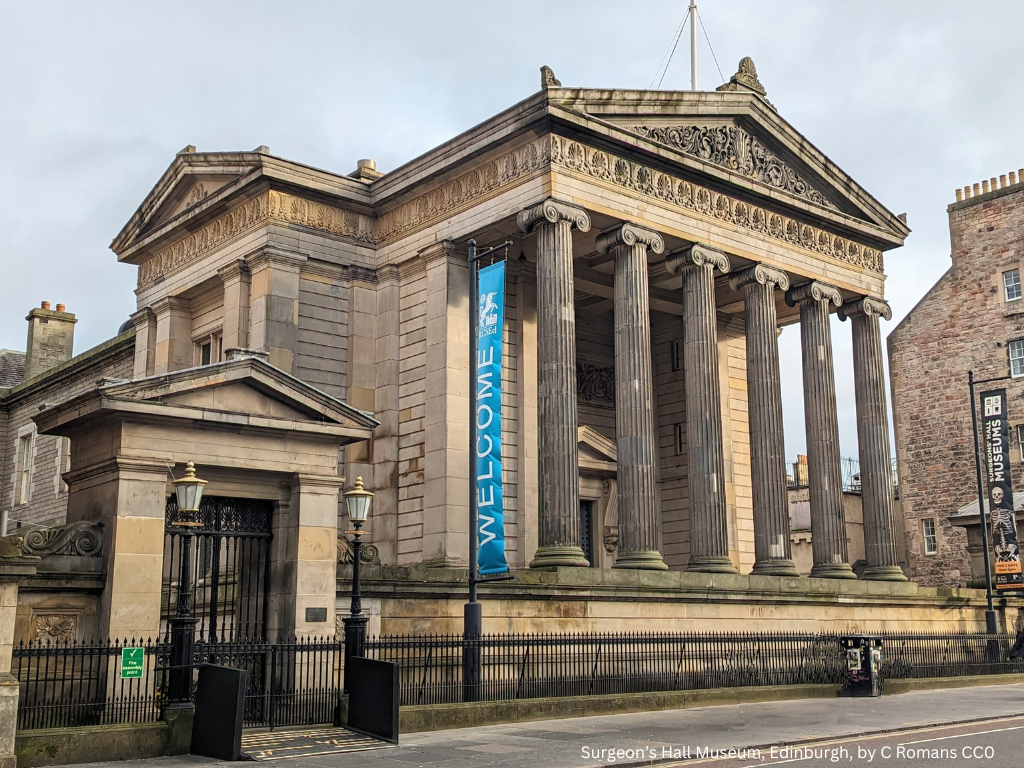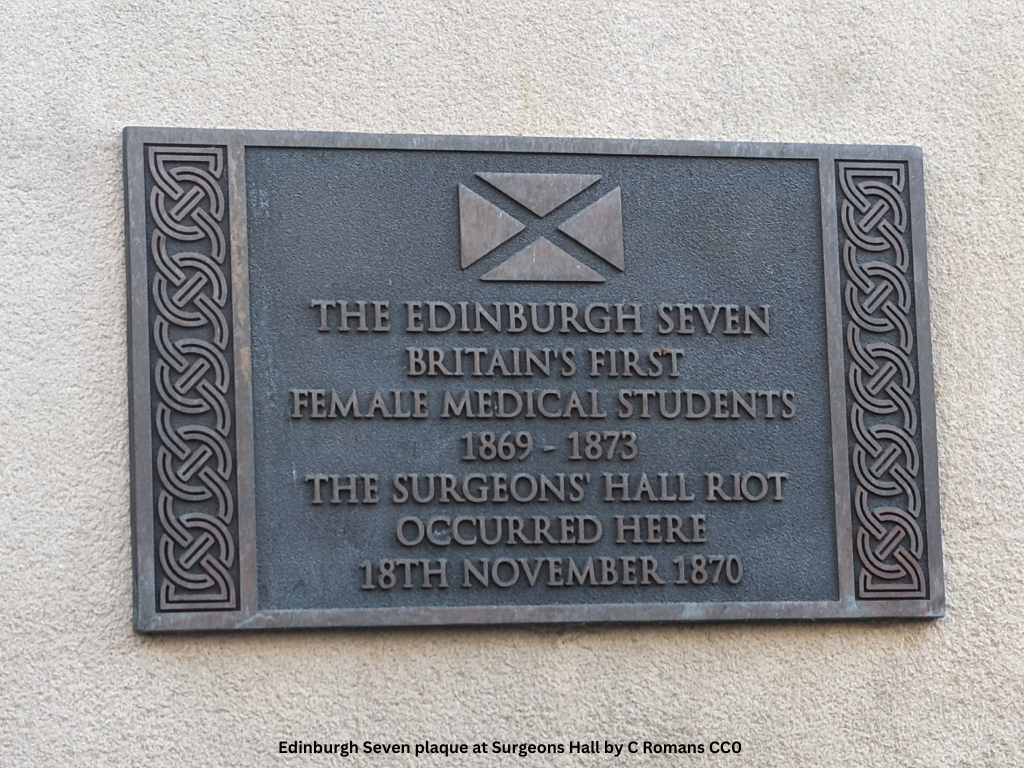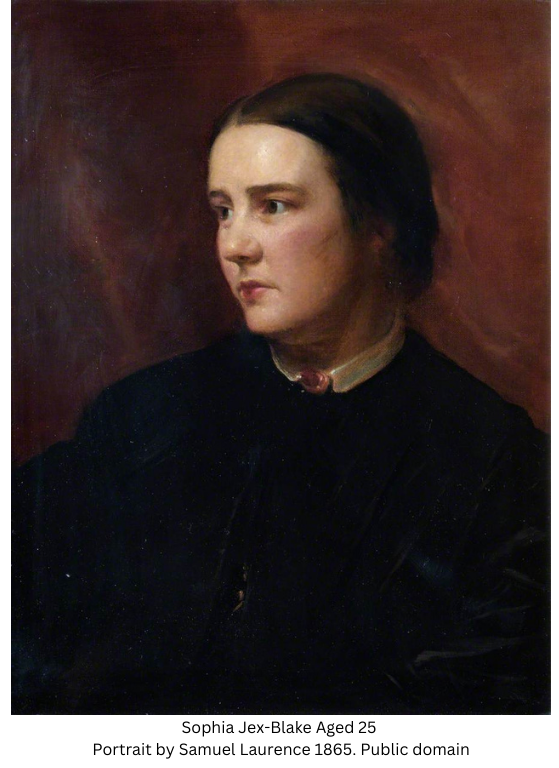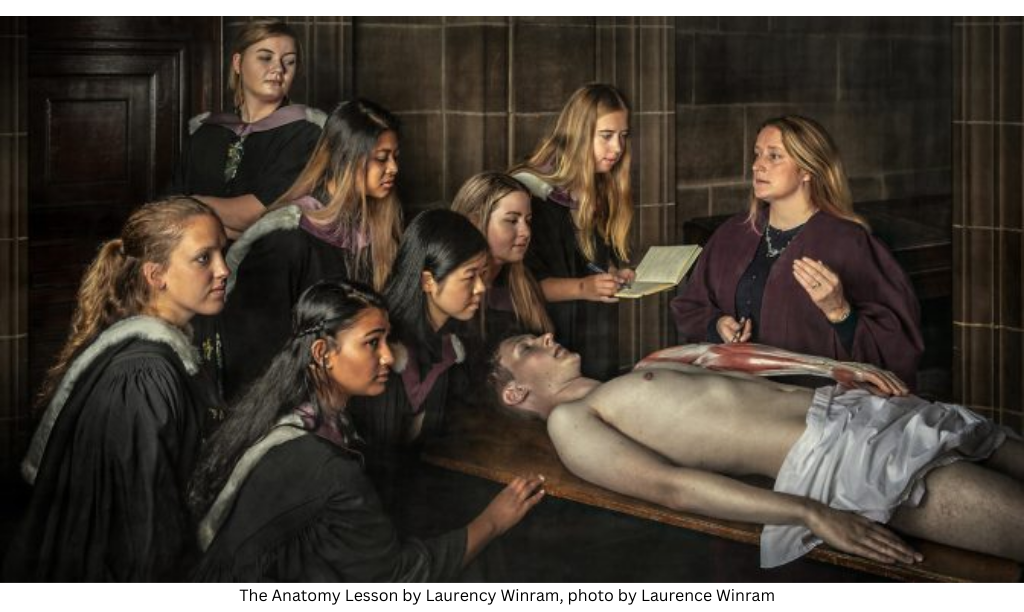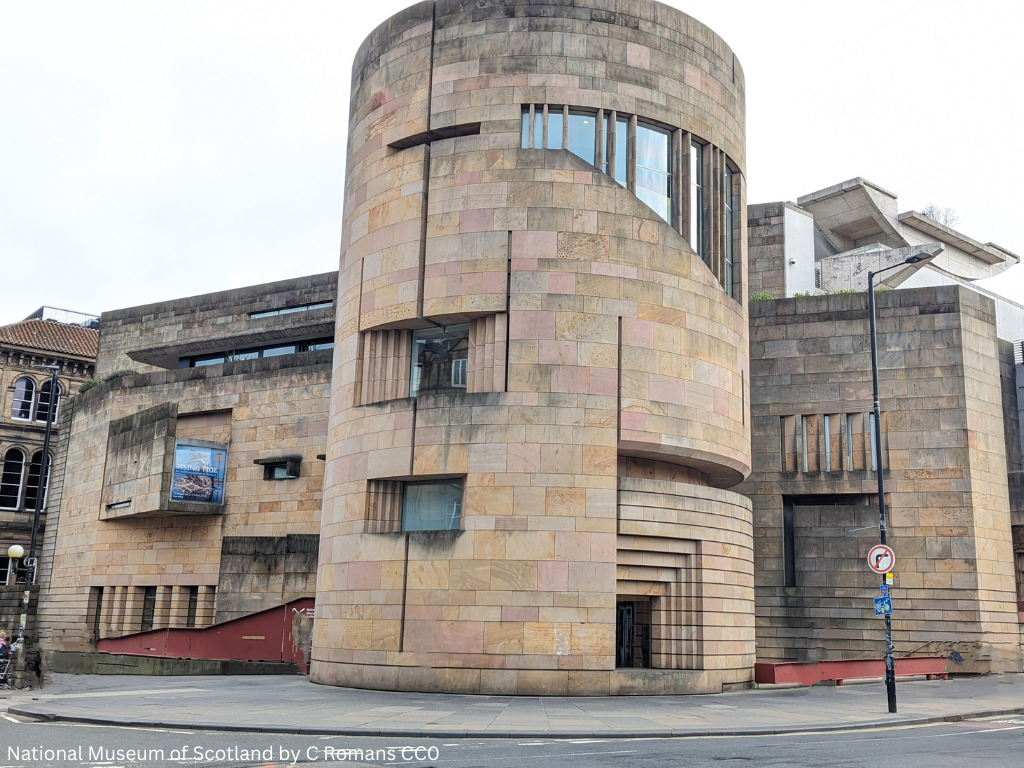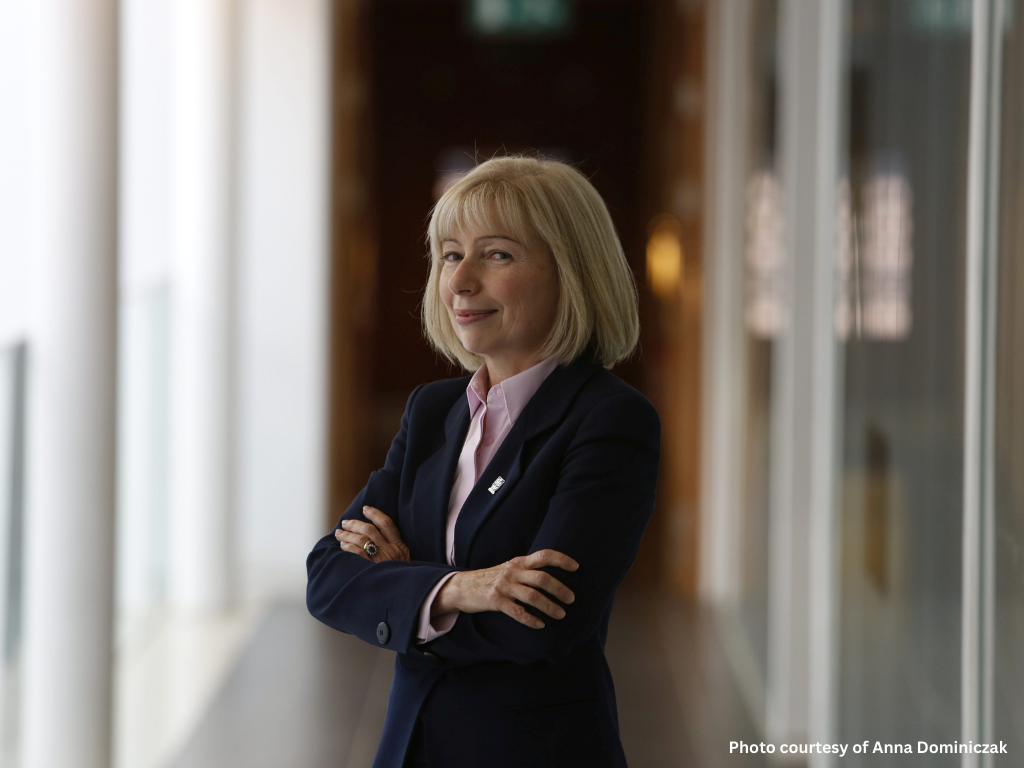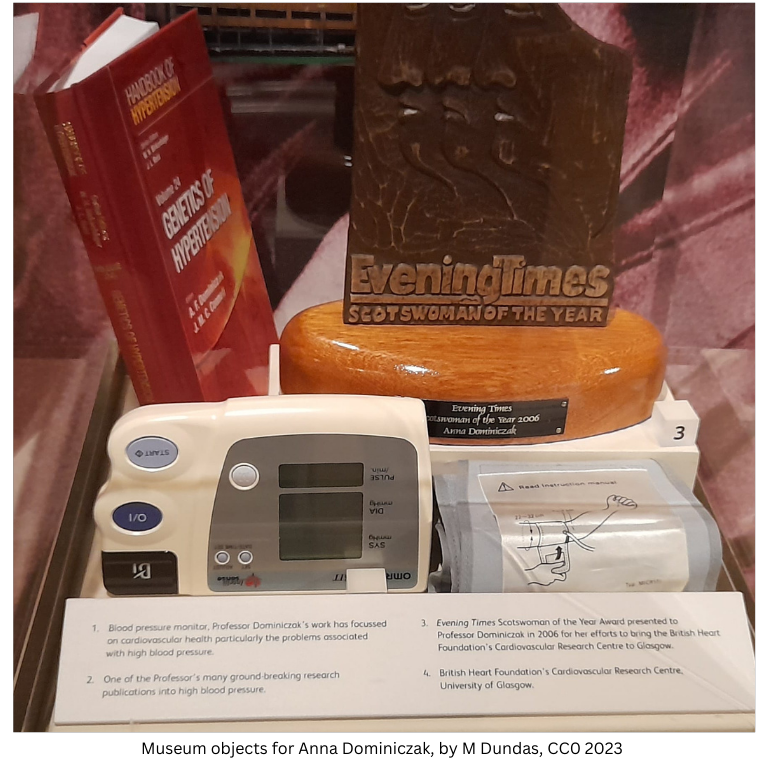The Nucleus Building, Thomas Bayes Road, Edinburgh, EH9 3FG

We hope you enjoyed the Edinburgh Women in STEM trail.
There are many other women who made significant contributions to science connected with Edinburgh, for example, Edinburgh-born chemist and mathematician Annie Hutton Numbers (1897 – 1988), or mathematician Marion Gray (1902 – 1979).
‘Edinburgh Alumnae: a celebration’ is a collection of eight photographic portraits of women who studied at the University of Edinburgh. The introductory plaque reads: ‘As we celebrate the opening of the first building of the campus’ second century, we present here a gallery of notable women who studied and worked at the University of Edinburgh. They represent some of those few women whose talents and determination – and their passion for their subject – led them to success, despite in many cases the circumstances and prejudices of their time’.

List of portraits:
- Molly Fergusson
- Charlotte Auerbach
- Christina Miller
- Chrystal Macmillan
- Honor Fell
- Marion Ross
- Sophia Jex-Blake
- Mary Brück
Source:
- “The Nucleus Building.” The University of Edinburgh. Accessed 18 Sept. 2023.
Additional links:
- Women of Scotland: Scotland’s STEM Pioneers, Historic Environment Scotland
- Women in Science in Scotland, Royal Society of Edinburgh
- Annie Hutton Numbers, Wikipedia
- Annie Hutton Numbers, MacTutor
- Marion Cameron Gray, Wikipedia
- Gray graph, Wikipedia
- Marion Cameron Gray, MacTutor
- University of Edinburgh Women in STEM Colouring Book




